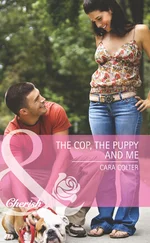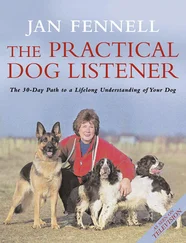BUYING A PUPPY
Falling in love with a puppy is the easiest thing in the world. We’ve all experienced the aaaaaaah factor, that moment when we’ve stared for the first time into the saucer-sized eyes of a cute young dog and gone hopelessly gooey. It’s for this reason that I recommend people begin their search for a puppy by steering clear of these charmers to begin with.
We know that owners are going to fall head over heels in love with the puppy. It’s a given. Far better for them to deal with the realities before beginning the romance. And the best way to do this is by first meeting the parents.
Producing a litter of puppies involves a collaboration between the human breeder and the dogs. The dogs deliver this new life into the world, but it is the former who must shoulder the ultimate responsibility. I passionately believe that the best way to assess whether a dog is coming from a good home is by getting to know both sets of ‘parents’ – human and canine.
Given that many breeders go to stud to begin their litters, it is more than likely that only the mother will be available. Her personality, temperament and general demeanour will reveal much. If you are able to meet the father as well, this will provide the clearest possible idea of the sort of dog its offspring is going to become.
Just as importantly, the attitude of the breeder is highly revealing. Is their home well-kept? How does the breeder behave towards the dogs? The extent to which the breeder interrogates all potential new owners is a good indication of the quality of the home. You should expect to be grilled by a good breeder. Personally, I insist on knowing as much as I can about anyone who wants to take one of my puppies into their home. It’s like an adoption society; reputable breeders – and registered rescue centres – are very careful about where they place the ‘children’ entrusted to their care. A good breeder is responsible for innocent young lives and they should want to know everything about the home into which they are considering releasing the puppy. They should always ask what the domestic situation is at home.
• Are there people around all day to look after the dog?
• Are there many small children in the home?
• Have they owned this type of dog – or indeed any dog – before?
• Have the prospective owners thought about whether the particular breed is right for their home?
The fact that the breeder, or rescue centre, asks these questions should be seen as a positive sign. If they are not asking these questions, they are probably more interested in making a sale than the dog’s welfare and should, therefore, be treated with caution.
By the same token, a good breeder should be open to questions from a potential owner. They should be willing to reveal anything and everything about the dog’s history and background – from the details of its parentage and its age, to its favourite food and toys. I’ve suggested a list of questions to ask below. Again, owners should be wary of anyone who is vague or unhappy about answering these questions.
Questions to ask a breeder or rescue centre
• What is the dog’s background?
• Who are its parents (if known)? Can you meet them?
• What age is the dog?
• Favourite foods?
• At what times is it fed, and what quantities of food?
• Favourite toys?
• What medical checks has it had?
• Has it been wormed?
• Has it had any vaccinations?
• Has it had its eye test to check for inherited conditions?
• Have any health problems been identified?
• Are there any procedures required by the breed standard, such as removal of a dew claw? If so, have they been done?
• Do its parents suffer from any hereditary problems that could have been passed on?
• Can you have the breed certification documents?
Potential owners should be particularly careful about checking for hereditary problems within some breeds. Cavalier King Charles Spaniels are prone to heart problems, for instance. Long-backed breeds like Basset Hounds and Dachshunds have a tendency to suffer from back pain and slipped discs. In German Shepherds and Labradors, potential buyers should look out for hip dysplasia, a genetic problem in which the ball and socket joint of the hip can be deformed or even non-existent. It is a condition that is extremely painful and ultimately crippling for dogs that are afflicted and something that good breeders monitor closely. Dogs are routinely x-rayed at the age of one and given a ‘hip score’ – which ranges from zero for perfect hips to 18 and higher, a mark which indicates the dog should not be used for breeding. Signs of hip dysplasia can manifest themselves even earlier than this, so it is wise to observe puppies for any tell-tale signs of discomfort in walking, such as ‘hopping’ when they walk.
So as to make informed and appropriate choices, potential owners are advised to research the breeds they are interested in. This is easily done through the Kennel Club or its equivalent organisation overseas and after that the various breed experts. The importance of this cannot be over-stressed. No one goes out to make a major purchase such as a new car or a house without researching the subject thoroughly. When they choose a dog, owners are introducing into the family a new member that will hopefully remain with them for 12 to 14 years. It is not something to be taken lightly.
BREEDS APART: WHAT DIFFERENT DOGS DEMAND FROM THEIR OWNERS
Hundreds of years of selective breeding by humans has produced a bewildering array of different dogs. And, for all their essential similarities, these dogs bring with them their own set of special needs. Some will need more exercise than others. Some will need much more grooming. Others will have a significantly shorter lifespan and will, therefore, incur the inevitable medical costs associated with old age that much sooner. Size is a factor too. The giant breeds need enough space in which to move and grow. Anyone considering acquiring a dog should take all these factors into consideration.
The demands of the different breeds fall into the following broad categories.
PHYSICAL DEMANDS
Some dogs have been bred to be more athletic and energetic than others. Gundogs or sporting dogs, for instance, will tend to demand a lot of exercise. These Springers, Pointers and Setters were, after all, bred to work on the hunt and are able to run for long periods during a normal hunting day. They also tend to love water and may be drawn to retrieve or chase birds, because of generations of breeding. Similarly, pastoral or herding breeds tend to be attracted to other species of animals and may instinctively try to herd them. Not every owner is going to have a flock of sheep for their Collie or German Shepherd to round up, but they should be prepared to give these dogs a proper outlet for their considerable energies. They need homes that are going to be up to the challenge of giving them plenty of exercise and play time.
At the other end of the scale, the toy dog group includes many breeds that were designed to provide little more than companionship and warmth, sometimes literally. Toy breeds such as the Chihuahua, Pekingese, Pomeranian and Maltese don’t need huge amounts of exercise.
SPATIAL DEMANDS
The size of a dog is a factor that needs to be taken into consideration. While toy dogs will not take up much space, large working dogs will fill almost any space they occupy. If they are active dogs as well, this could cause owners problems in a small or restrictive space. Everyone, of course, has the right to own the breed of their choice, but allowances should be made for the living space they require.
GROOMING DEMANDS
Dogs are naturally clean animals, and take a great deal of care of their condition. As a result, some breeds require next to no grooming. Smooth-coated dogs such as the Labrador Retriever or the Great Dane, for instance, are low maintenance compared to other breeds. By contrast, there are some breeds that have been bred purely for their look and consequently have exceedingly long, high-maintenance coats. Breeds that spring to mind here include Afghan Hounds, Spaniels, Old English Sheepdogs, the Bichon Frise and Poodle breeds. Dogs in the Terrier group can also require ‘hand stripping’ (see page 32) to keep their coats looking good.
Читать дальше












